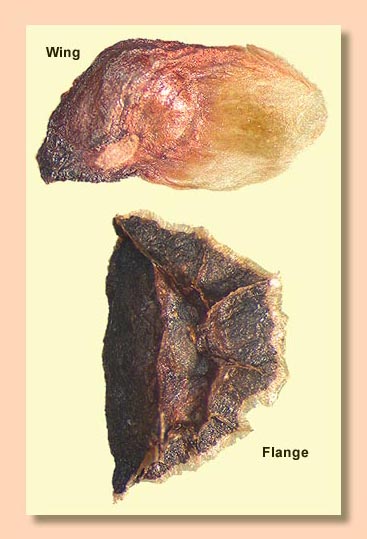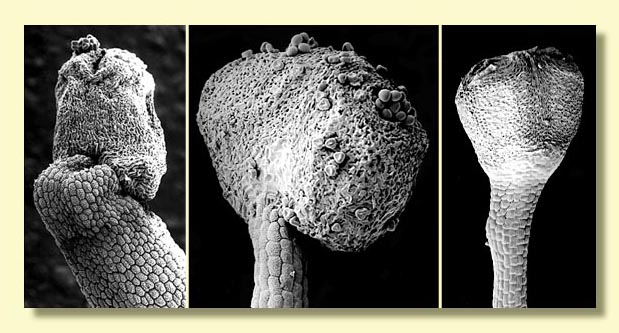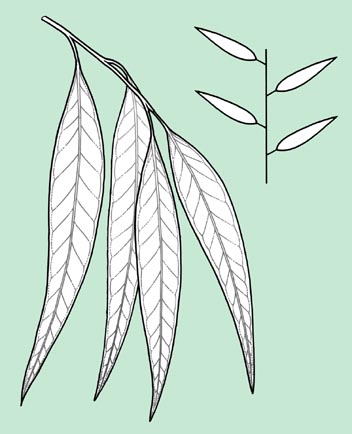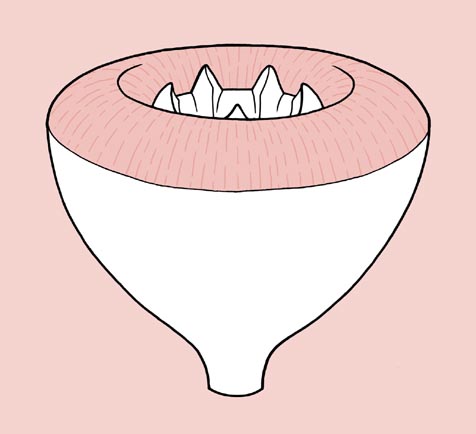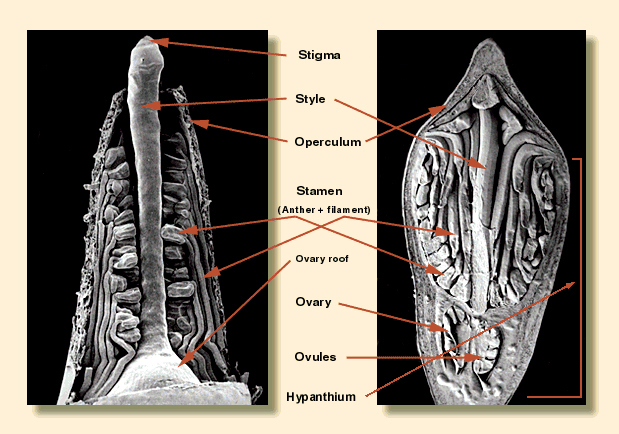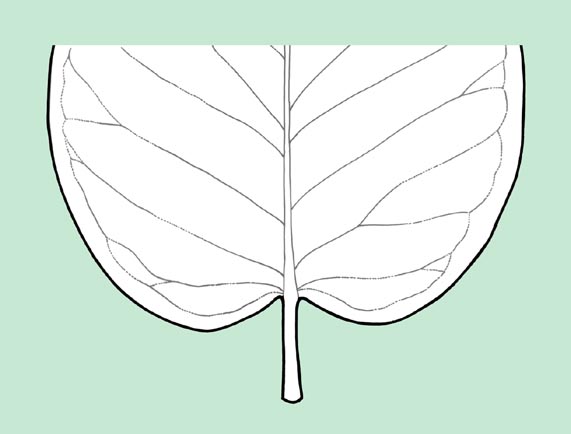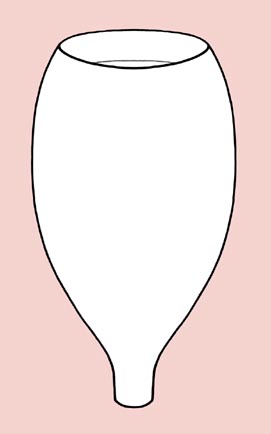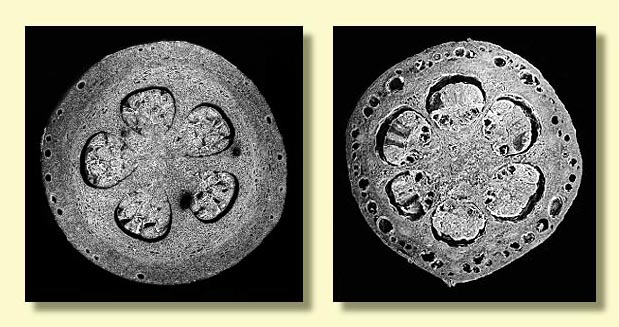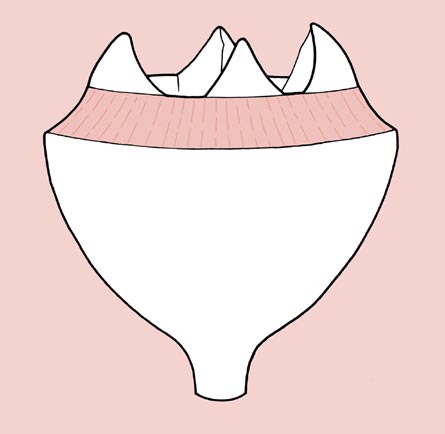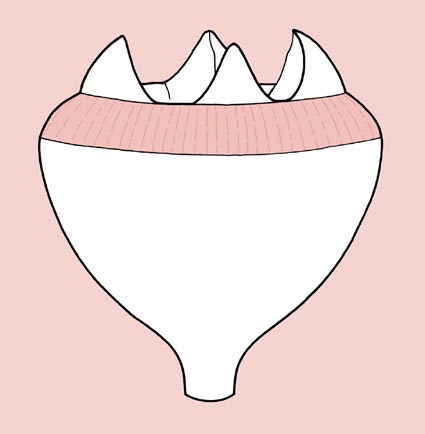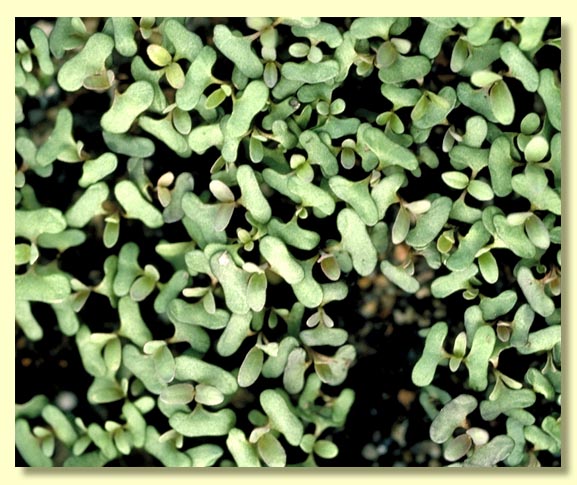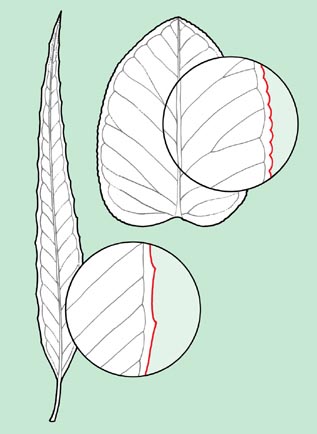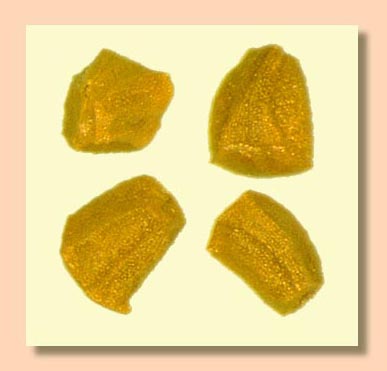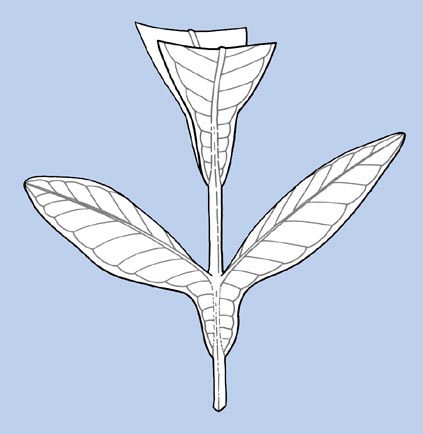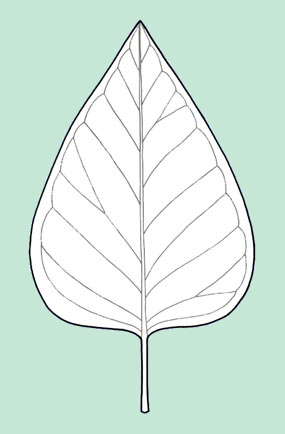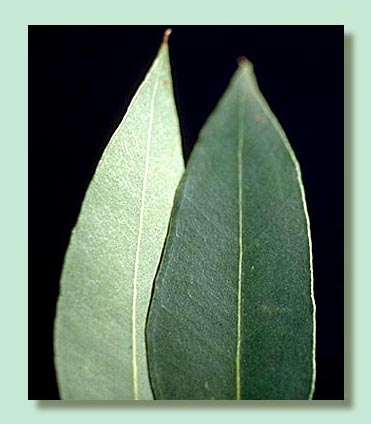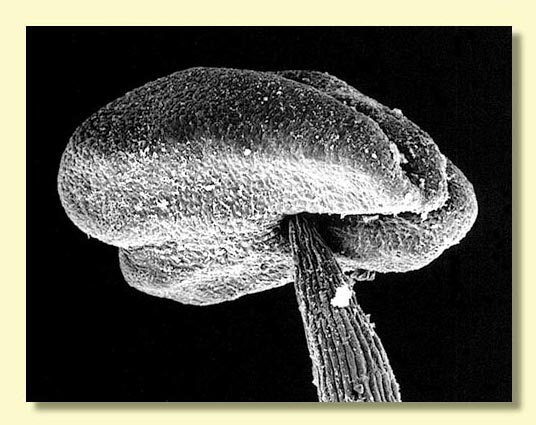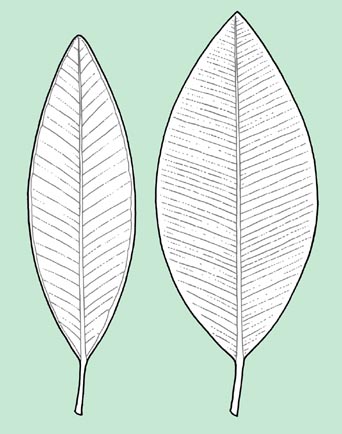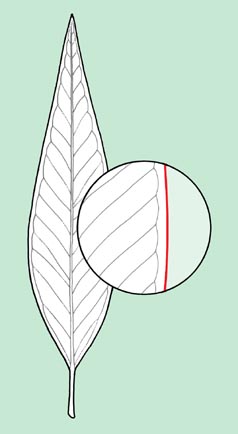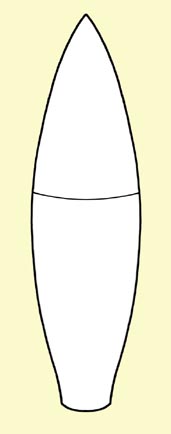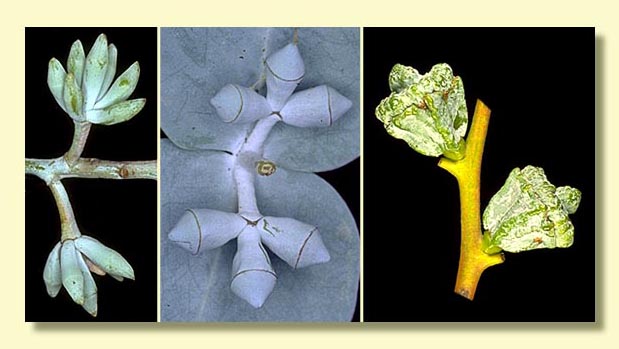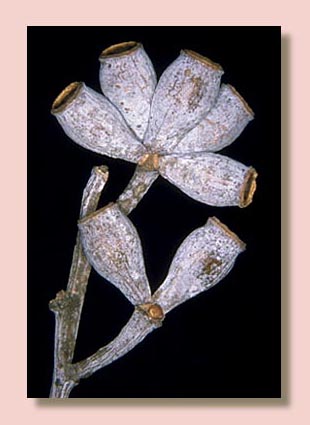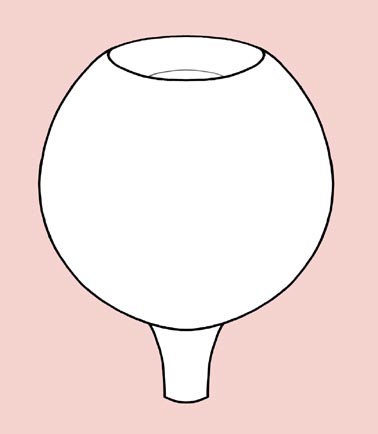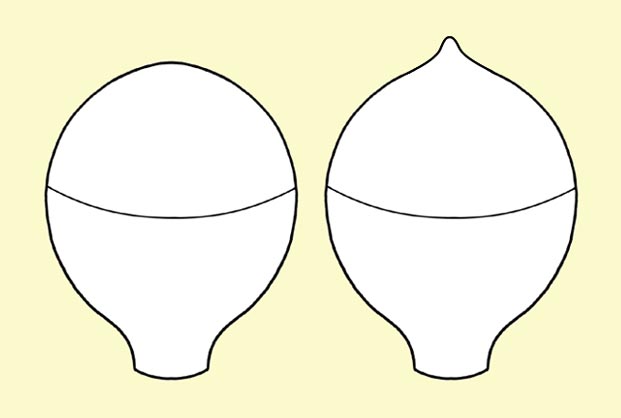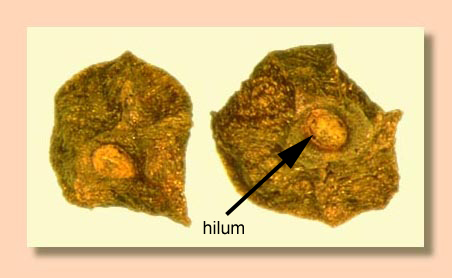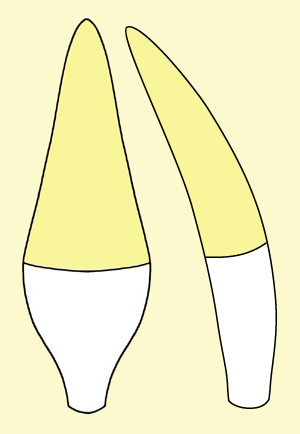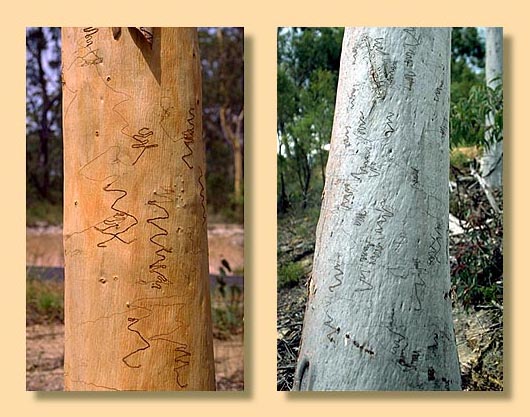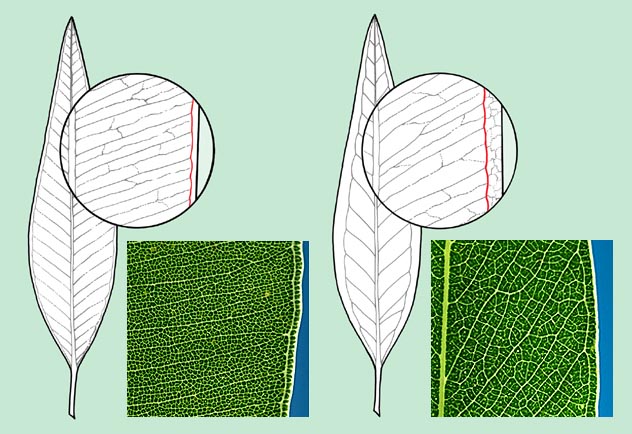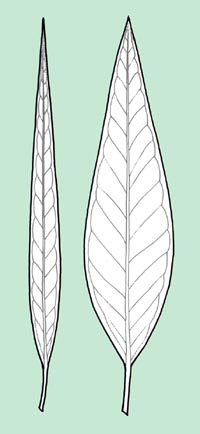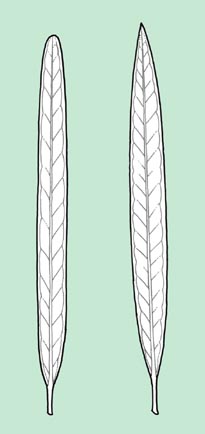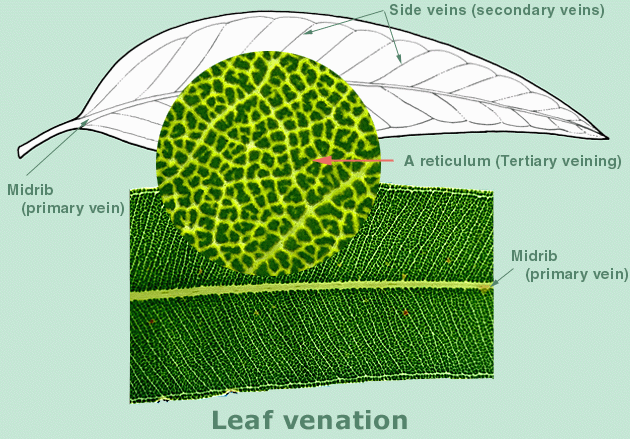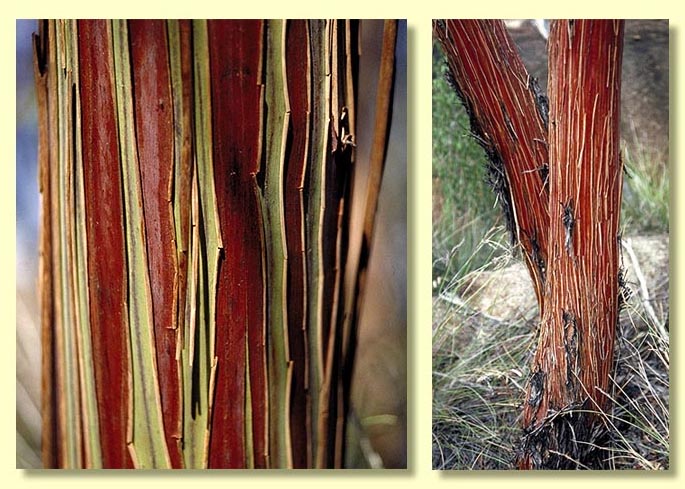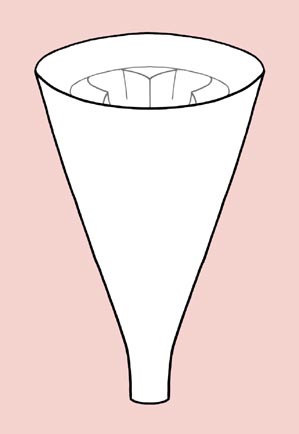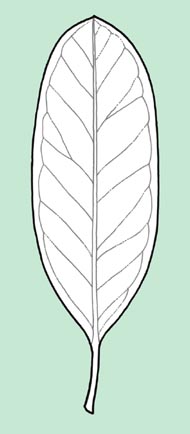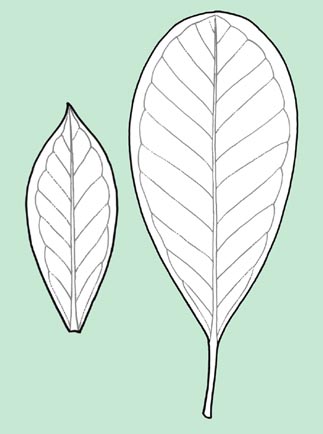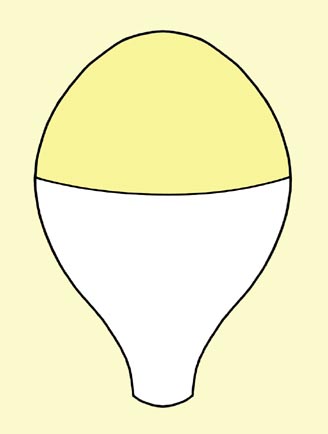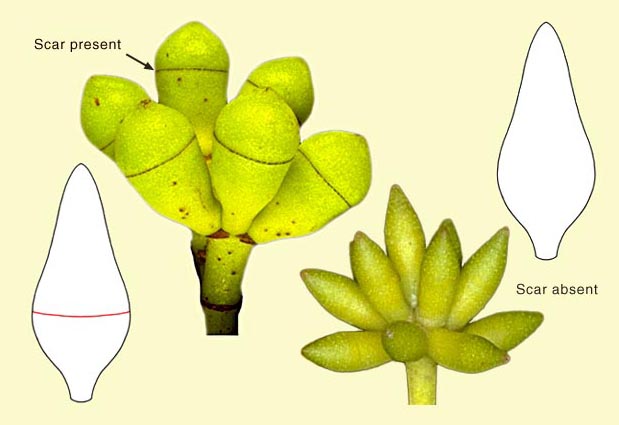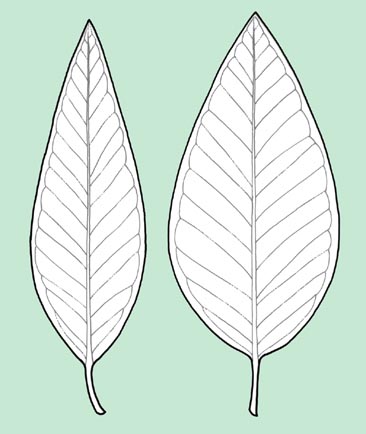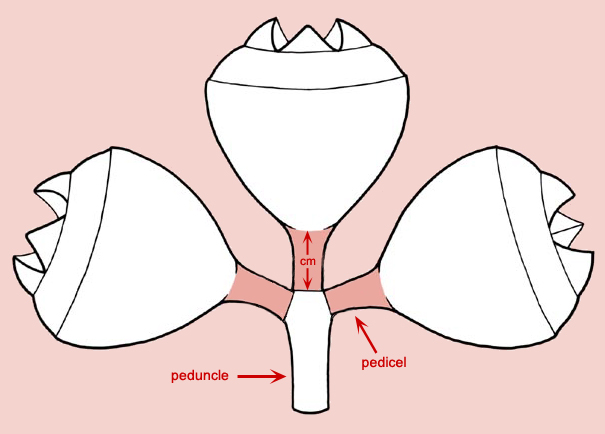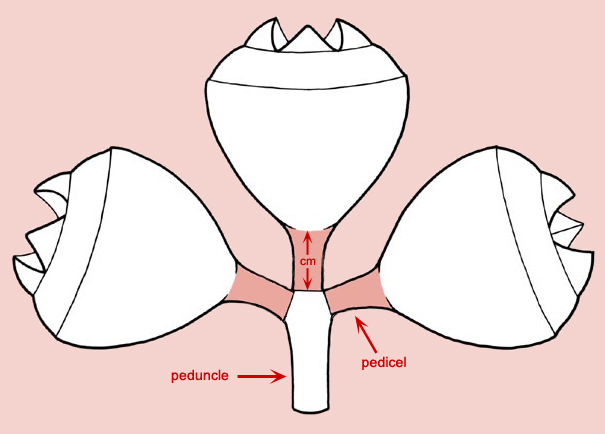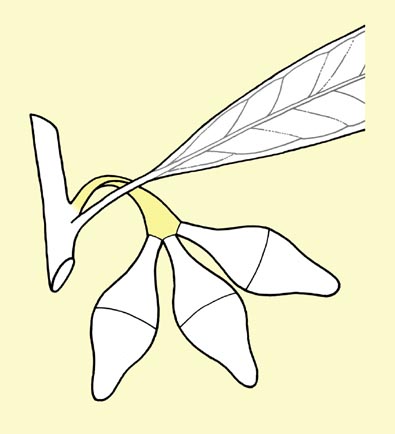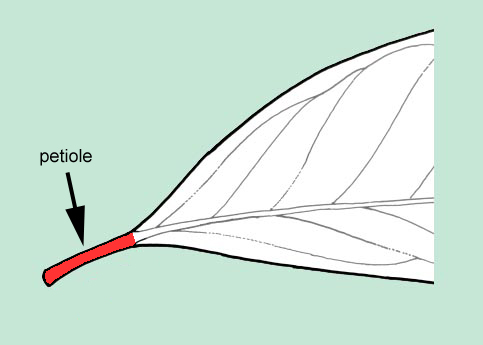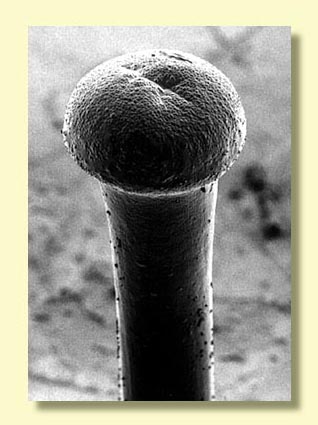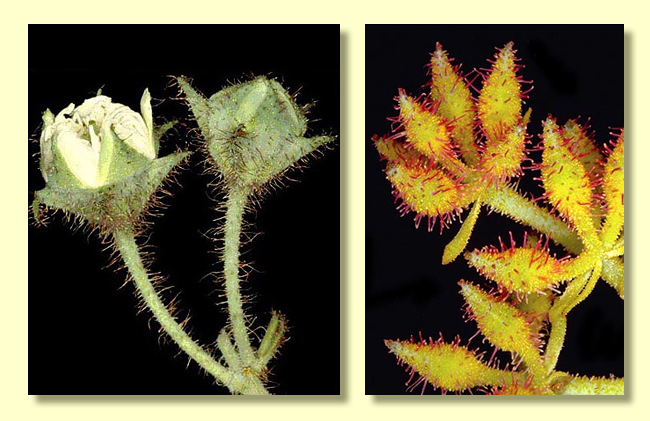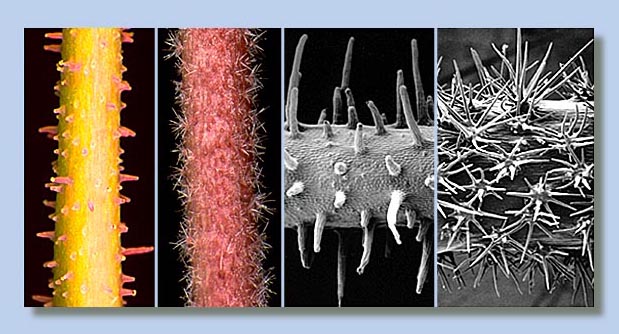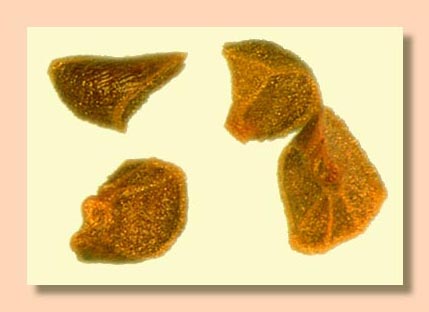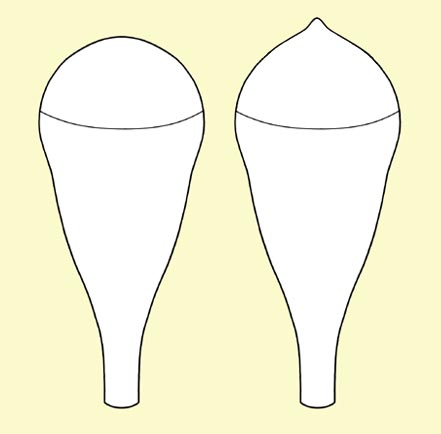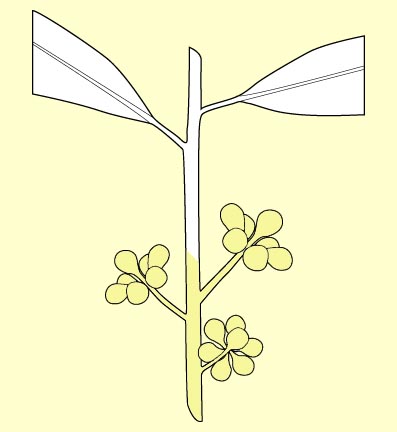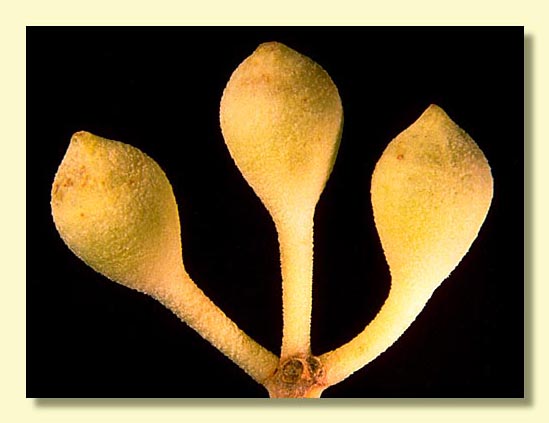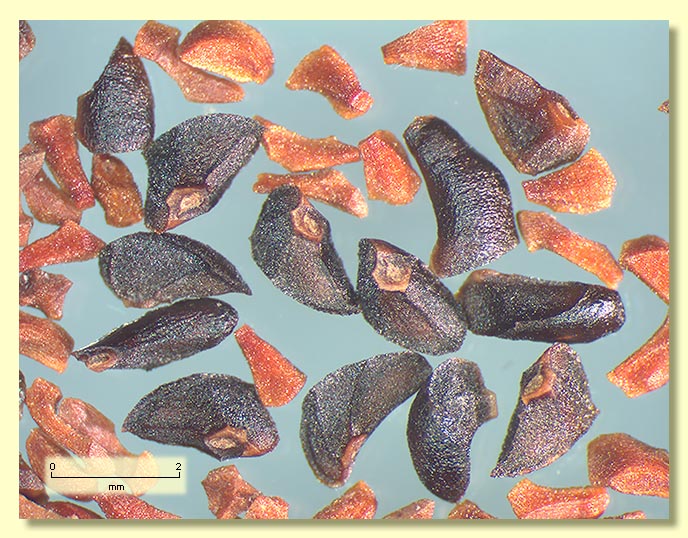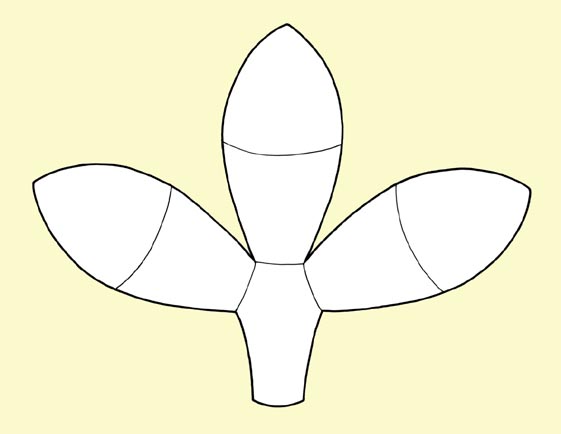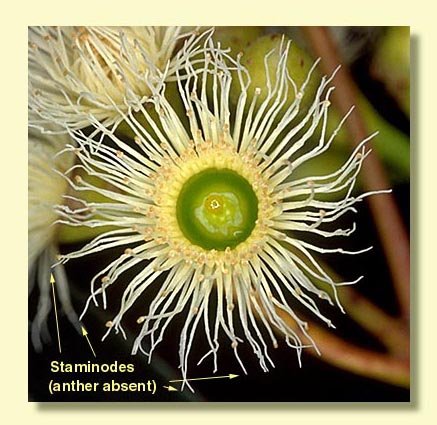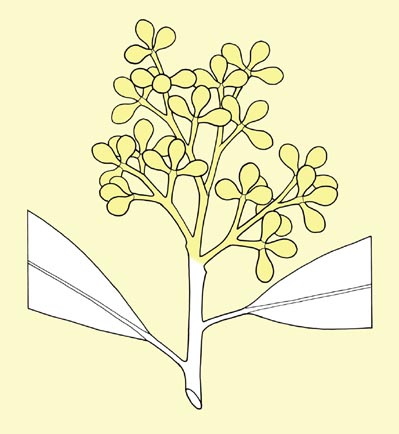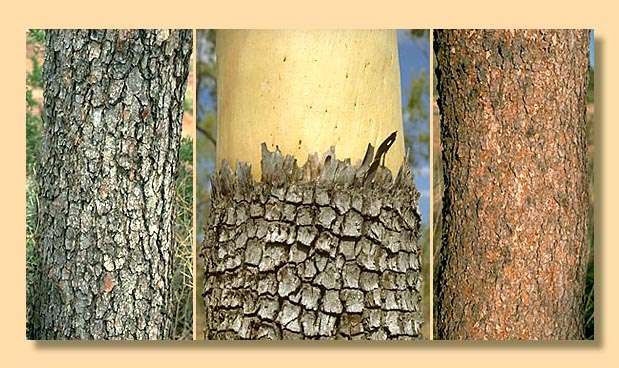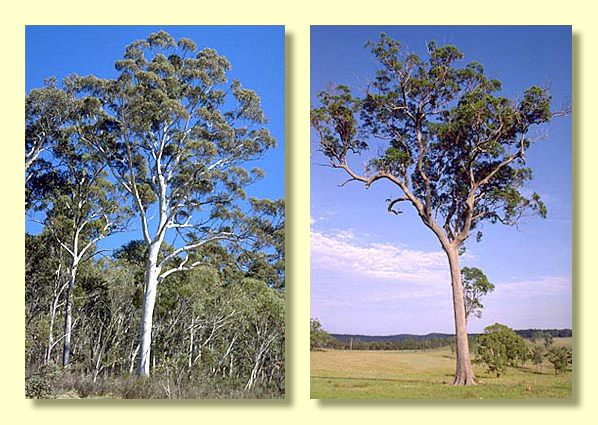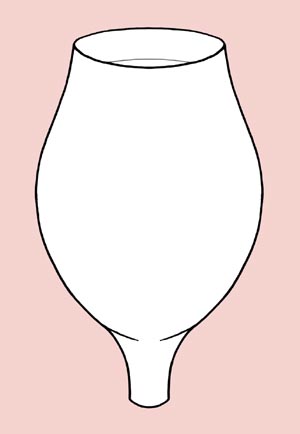ending in a sharp point (apex of a leaf) 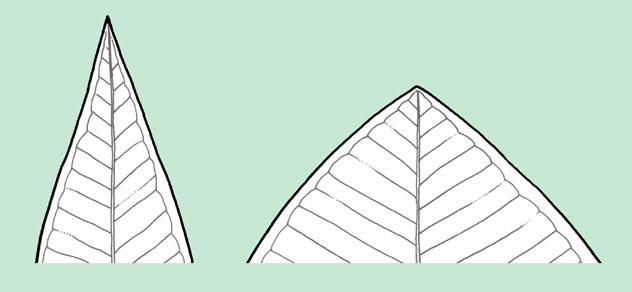 ; with an angle less than 45 degrees to the midrib (leaf side veins)
; with an angle less than 45 degrees to the midrib (leaf side veins) 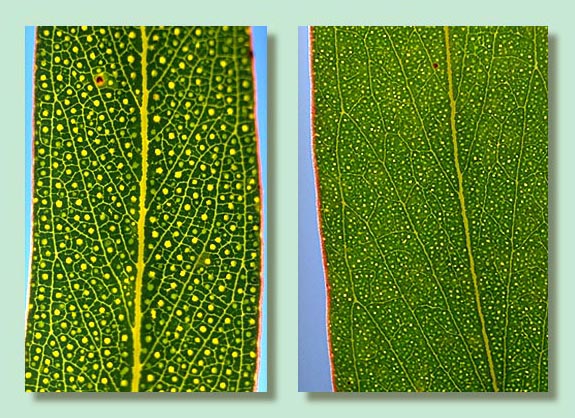
the final growth phase of the leaves
stem-clasping; when the sides of the base of the sessile leaf continue to the opposite side of the stem and overlap with the base of an opposite leaf if present 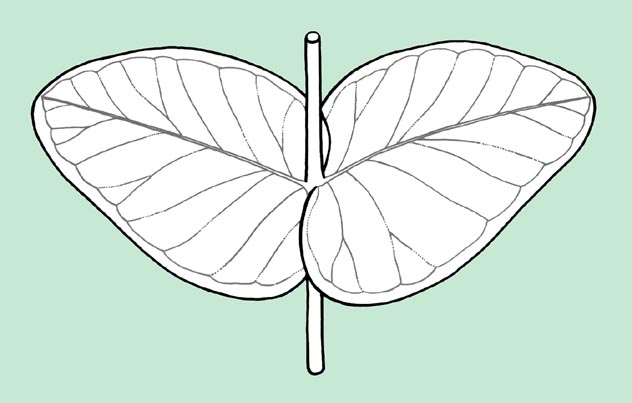
at the apex of (tip)
ending abruptly in a short flexible point
any small green area of a leaf blade surrounded by veinlets, visible when a leaf is held up to sunlight and inspected with a handlens; may contain a pale dot which is an oil gland
small green areas of a leaf blade surrounded by veinlets, visible when a leaf is held up to sunlight and inspected with a handlens; may contain a pale dot which is an oil gland
when the disc of the fruit is raised between the staminophore and the valves 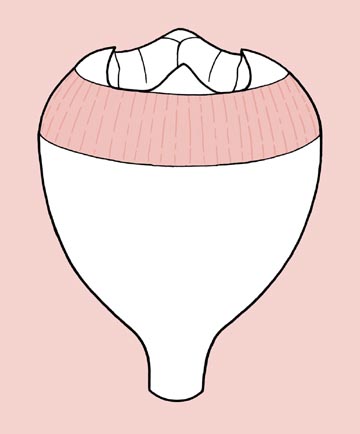
the upper angle between the leaf and the stem
referring to the location of a plant organ in an axil, for example, the axillary inflorescence 
the upper angles between the leaf and the stem
the tissures, collectively outermost to the cambium of a woody plant
dead bark that is persistent, short-fibred, firm, often breaking into a tessellated pattern, often also partly deciduous and bleached 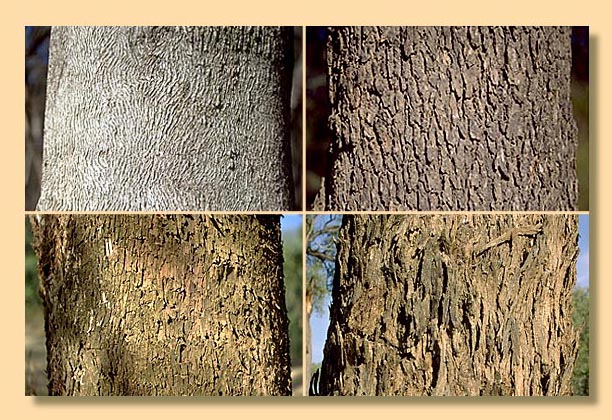
the current and previous years stem growth, usually that part of the plant bearing the leaves
setae or multi-cellular hairs found on the leaves of species in Angophora and Eucalyptus sub-genus Corymbia
a group of cells (or a single cell) with a potential for active division for the initiation of vegetative or reproductive growth (in eucalypts, usually refers to the developing flower)
groups of cells (or a single cell) with a potential for active division for the initiation of vegetative or reproductive growth (in eucalypts, usually refers to the developing flower)
bell-shaped; of the fruit, but seen upside-down 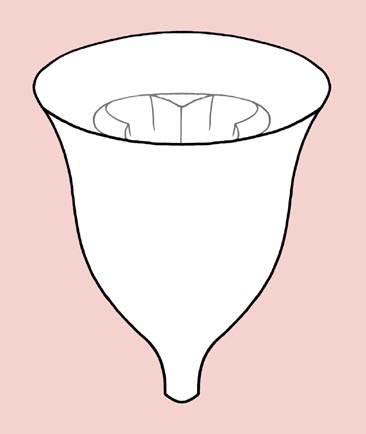
club-shaped; of the buds, distinctly pedicellate and widening towards the top 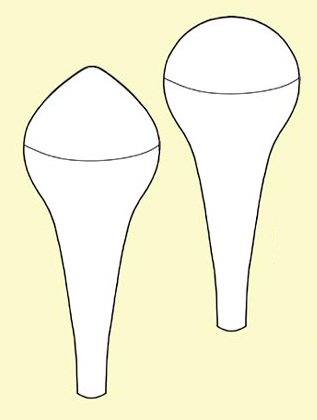
when the dead bark is persistent and compact with narrow fissures, usually kino impregnated
when the inflorescence is branched 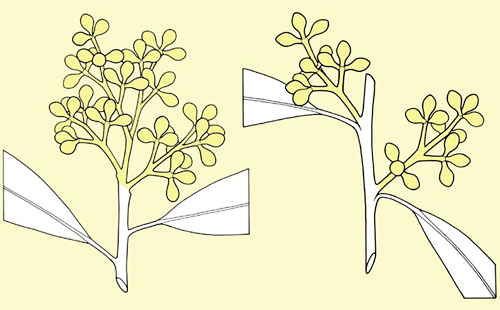
when the leaves are the same colour on both sides
a type of compound axillary inflorescence found in many ghost gum species where branches or internodes within the inflorescence are much shortened and difficult to see. The peduncles of the umbels may also be shortened further obscuring the arrangement. Individual buds may have short, long or very long pedicels, depending on the species 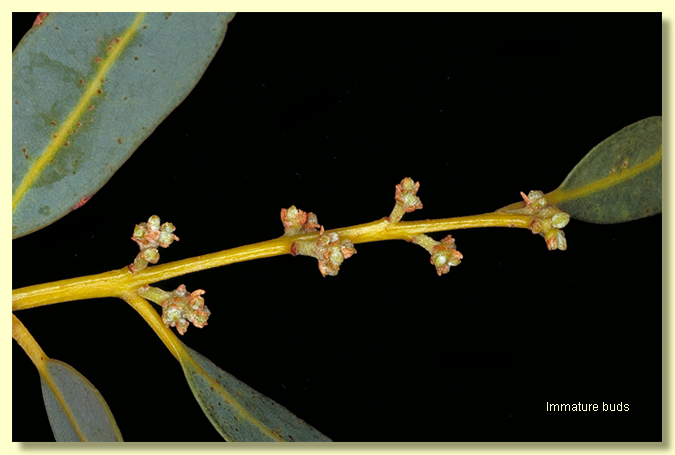 . Compare with expanded inflorescence.
. Compare with expanded inflorescence.
blending together, of an anther when the slits formed in dehiscence join in a single crescent-shaped opening 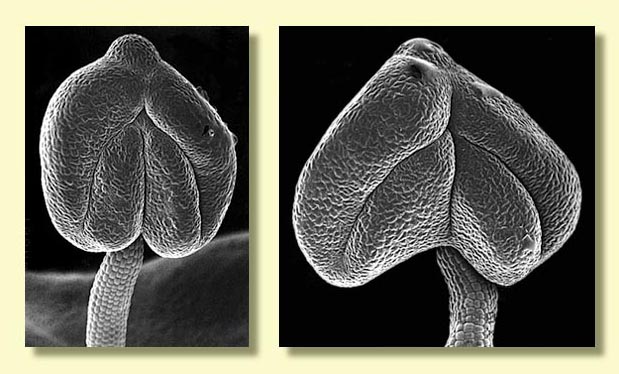
 , of a leaf when the intramarginal vein blends into the edge of the leaf blade
, of a leaf when the intramarginal vein blends into the edge of the leaf blade
a three dimensional shape, triangular in median longitudinal section and circular in cross-section 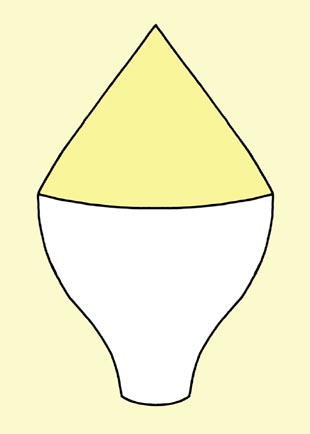
young stems shooting from a stump or the juvenile growth sprouting from mature trunks or branches 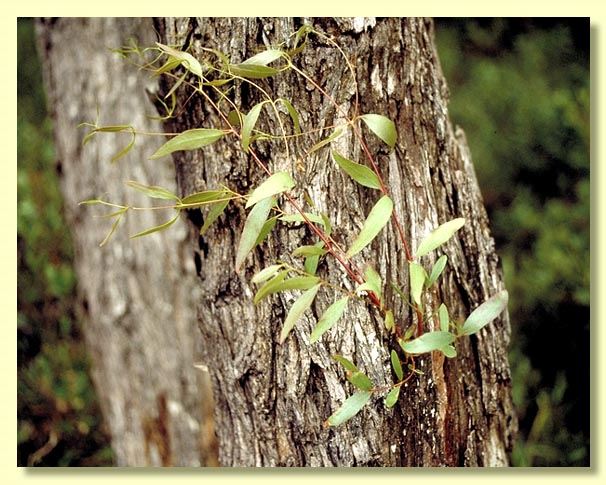
the first pair of leaves in an embryo, seen following germination (seed leaf) 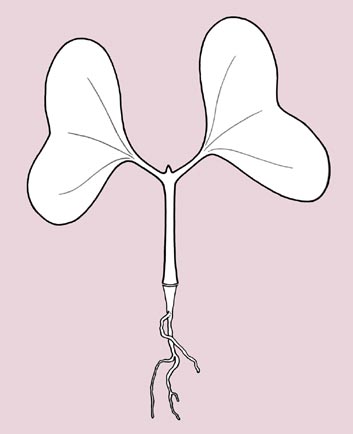
wedge-shaped
cup-shaped
shedding of the bark, shed yearly or at the end of a recurring growth period
shed bark
of leaves, where pairs of opposite leaves are arranged successively at right-angles to each other up the stem
when the disc lines the upper tubular part of the hypanthium, or slopes downwards towards the valves
the tissue in the bud or fruit between the staminophore and the top of the ovary
for eucalypts, usually refers to the shape of the buds, where the operculum is usually much narrower than the hypanthium at the join 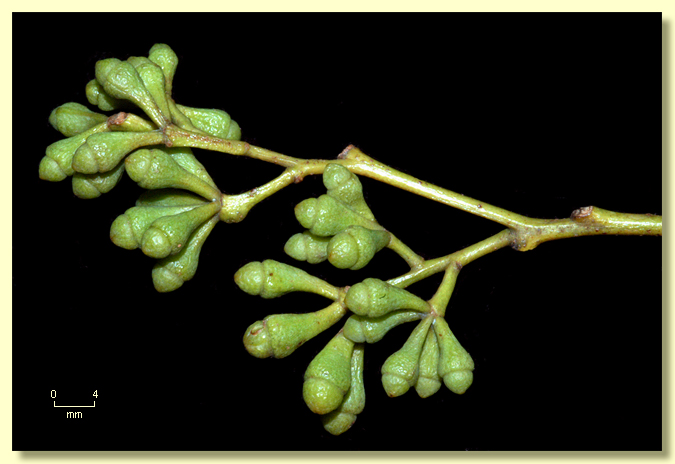
a three dimensional elliptic shape
shaped like an ellipse
type of compound axillary inflorescence found in several ghost gum species where branches or internodes within the inflorescence are long and clearly visible, with insertion of successive peducles of bud clusters clearly visible  . Compare with condensed inflorescence.
. Compare with condensed inflorescence.
curved like the blade of a sickle
of the colour of rusted iron
when the male nucleus of the pollen unites with the female nucleus of the ovule
when the bark is non-decorticating and is held in short or long fibres, usually dense, but often held loosely on old branches or towards base of trunk
the final reproductive organ in a plant; in a eucalypt a composite structure of the seed-bearing capsule held within a woody hypanthium, opening at the top where the seed are shed after dehiscence
the final reproductive organs in a plant; in a eucalypt a composite structure of the seed-bearing capsule held within a woody hypanthium, opening at the top where the seed are shed after dehiscence
bent sharply (strongly elbowed)
a unit of classification in living organisms below the level of Family, comprising one or many related species
smooth, without hairs
in eucalypts, small or minute oil containing structures seen near the surface of the young stems, leaves  , buds and fruits; also near, or at, the top of the connective of the anther; or in the pith of the branchlets
, buds and fruits; also near, or at, the top of the connective of the anther; or in the pith of the branchlets  , buds and fruits; also near, or at, the top of the connective of the anther; or in the pith of the branchlets
, buds and fruits; also near, or at, the top of the connective of the anther; or in the pith of the branchlets
in eucalypts, small or minute oil containing structures seen near the surface of the young stems, leaves, buds and fruits; also near, or at, the top of the connective of the anther; or in the pith of the branchlets
the general appearance or characteristic growth-form of a plant
the external environment in which a plant lives
holotype (the specimen chosen by the author and cited in the original description as that by which the species must be interpreted)
the progeny resulting from the crossing of two parents with different genetic systems, i.e. usually of different species
progenies resulting from the crossing of two parents with different genetic systems, i.e. usually of different species
the part of the stem between the points of leaf attachments
parts of the stem between the points of leaf attachments
when the leaf oil glands occur at the intersections of the veinlets or touches them 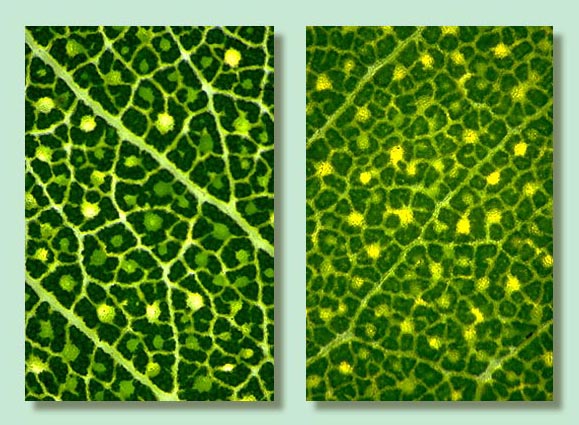
dead bark that is persistent, usually hard, thick, widely and deeply furrowed, and impregnated with kino 
not rounded in outline; usually referring to leaf oil glands which may be either island oil glands (not connected to veinlets) or intersectional oil glands (connected to veinlets)
when the leaf oil glands occur in the centre of the smallest unreticulated areas (areole) of the leaf, as opposed to intersectional oil glands that occur at the intersections of the veinlets 
isotype (a duplicate specimen of the holotype, i.e. being part the same collection)
isolectotype (a duplicate of the lectotype)
the growth phase of the leaves between the seedling and the intermediate
leaf blade
lectotype (a specimen or illustration, selected from the specimens cited in the original description, to serve in place of the holotype when the holotype is missing or destroyed, or where no holotype was designated, or if it is found to belong to more than one taxon)
a woody tuber developed in the axils of the cotyledons or the first few leaf pairs, becoming massive in many mature trees or mallees, possessing embedded vegetative buds for regeneration following crown destruction, for example by fire 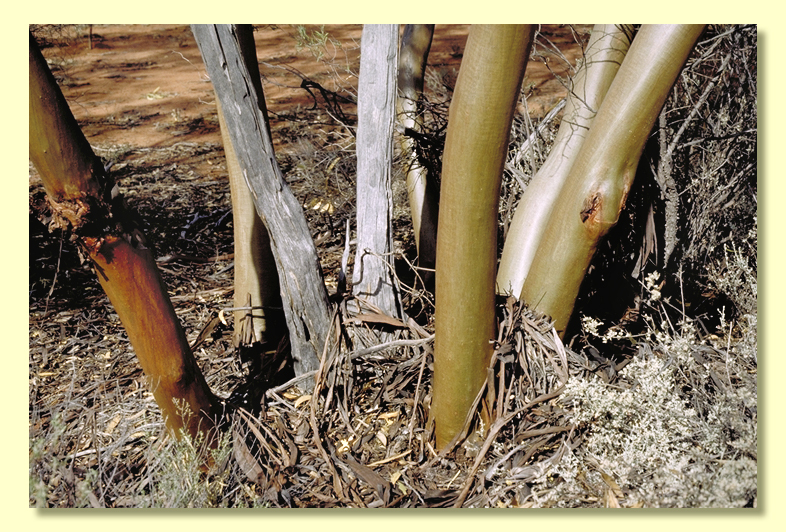
woody tubers developed in the axils of the cotyledons or the first few leaf pairs, becoming massive in many mature trees or mallees, possessing embedded vegetative buds for regeneration following crown destruction, for example by fire
the growth form of many eucalypts, i.e. a multi-stemmed shrub with a lignotuber; (sometimes used loosely for a low straggly short-trunked tree) 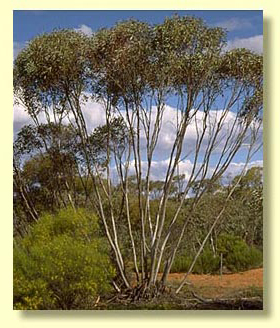
multi-stemmed shrubs with a lignotuber; (sometimes used loosely for a low straggly short-trunked tree)
a specialised tree growth form found only in Western Australia, having slender erect stems and steeply angled branches but lacking the regenerative structures found in many other eucalypts, viz. lignotubers and epicormic buds 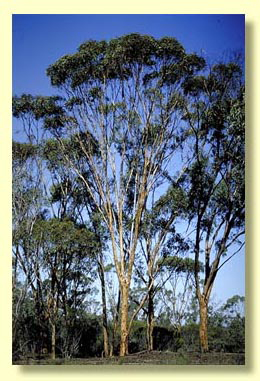
specialised tree growth forms found only in Western Australia, having slender erect stems and steeply angled branches but lacking the regenerative structures found in many other eucalypts, viz. lignotubers and epicormic buds
a single-stemmed shrub or small tree which has spreading branches that are densely leafy often almost to the ground, and lacks a lignotuber 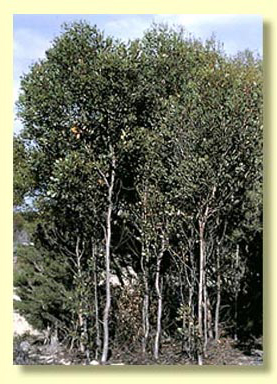
single-stemmed shrubs or small trees which have spreading branches that are densely leafy often almost to the ground, and lack lignotubers
shape or form, or the study of them
with a mucro, a short, hard or flexible point, usually referring to the leaf apex
the point of attachment of leaves on a stem
the points of attachment of leaves on a stem
the opposite of cordate, in eucalypts usually referring to a heart-shaped leaf where the leaf stalk is attached at the narrow end of the leaf 
the reverse of lanceolate, with the widest part between the middle of the leaf and the apex 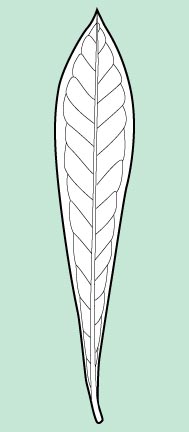
of the leaves, when the two sides of the leaf base meet at different points on the midrib or petiole; of the anther, when the slits of dehiscence slope inwards towards the top of the groove separating the sacs 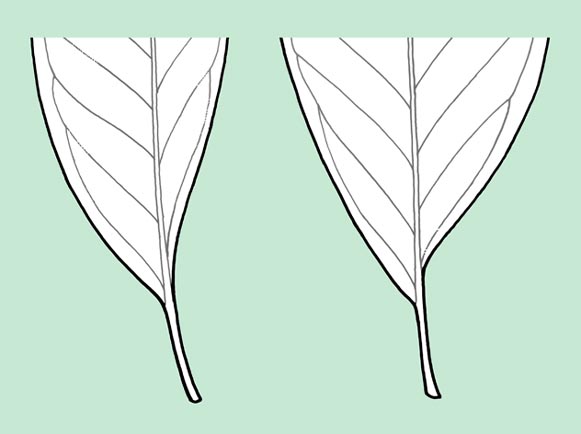
egg-shaped (3 dimensional structures) with the broadest part towards the apex, the opposite of ovoid
orthographic variant
orthographic error
egg-shaped (3 dimensional structures), with the broadest part at the base, usually referring to bud shape 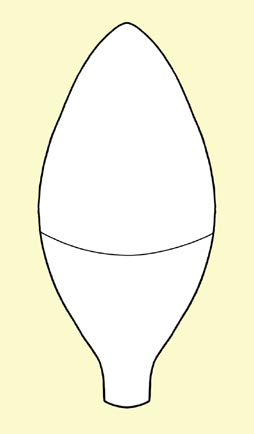
the organ of a seed-plant borne on the placenta that develops into a seed after fertilisation 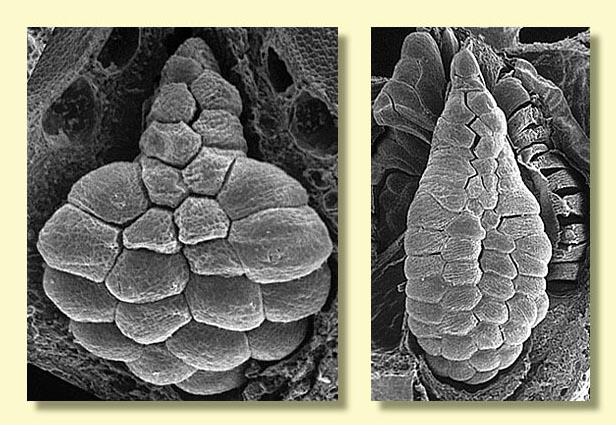
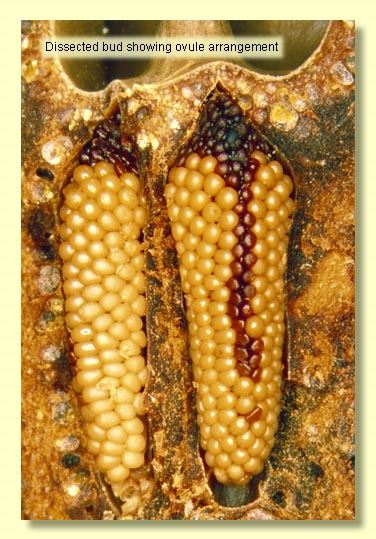
organs of a seed-plant borne on the placenta that develop into seed after fertilisation
a branched inflorescence
branched inflorescence
a small, elongated protuberance on the surface of an organ
covered with short blunt protruberances
with stalks
when the petiole of the leaves is attached on the underside of the leaf blade within the margin 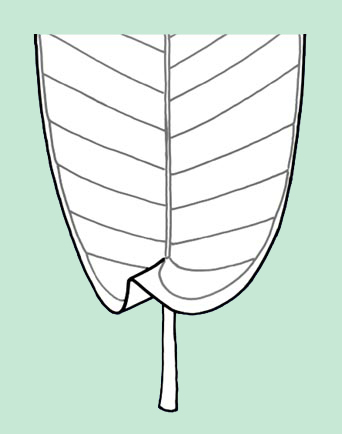
feather-like; when the side veins of the leaf are very numerous, parallel, close together and at a relatively wide angle to the midrib
of the bark, when the dead bark is persistent, relatively short-fibred, firm, interlaced and finely fissured longitudinally; of the leaf oils, detected when a strong peppermint smell is obtained by crushing the leaves
by personal communication
when the dead bark is not shed yearly and accumulates in the following forms - stringy, peppermint, compact, box, ironbark
of a petal
with a stalk
leaf stalks
leaf arrangement on the stem, e.g. decussate, spiral etc.
the inner core of tissue of a plant stem
cells or tissues in the earliest stages of differentiation
as a synonym
kidney-shaped; of the anthers and cotyledons 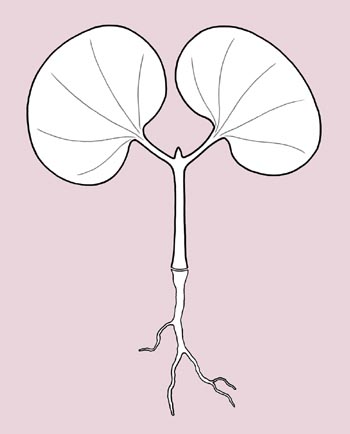
outer edge, usually circular and often raised, in eucalypts usually referring to the upper edge of the fruit 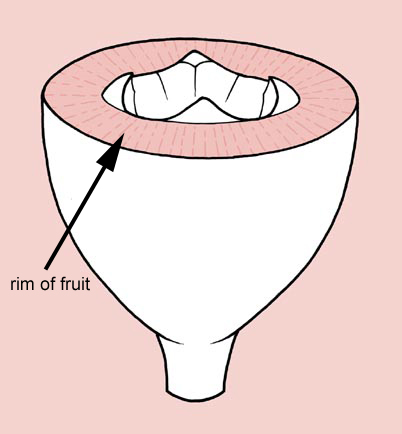
poorly developed and usually not functional
wrinkled
flattened like a saucer, usually referring to seed shape 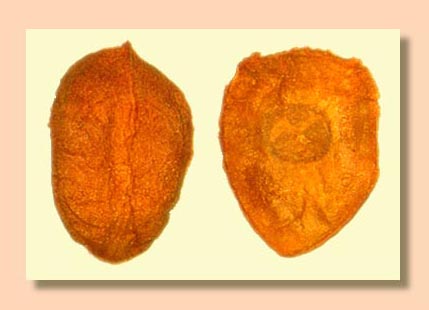
of a surface when roughed by short protuberances
the next growth phase of the leaves after the cotyledons but before the juvenile leaves
the next growth phase of the leaves after the cotyledons but before the juvenile leaves
mature ovules within which develops embryos, formed in the sexual reproductive cycle, consisting of protective coats enclosing the embryos and food reserves
bristle shaped structures (usually referring to bristle-glands)
of a surface when covered by bristle-glands
mallees that are low and very irregularly branched, without a principal erect main stem
unbranched (usually referring to unbranched inflorescences or unbranched hairs)
the basic unit of classification which usually refers to one or several groups of plants or other living organisms that interbreed and maintain their distinctive identity through successive generations
the band of tissue in a flower bud that subtends the stamens. In most species it is not conspicuous and, after flowering, it is either shed in fragments when the stamens fall or remains inconspicuous on the developing fruit. In some species it remains intact, persisting as an obvious dry annulus on the top of the fruit for some time after the stamens have fallen, but ultimately is deciduous. In E. polyanthemos subsp. longior the staminophore, complete with stamens, sheds as a "fairy ring" immediately after flowering 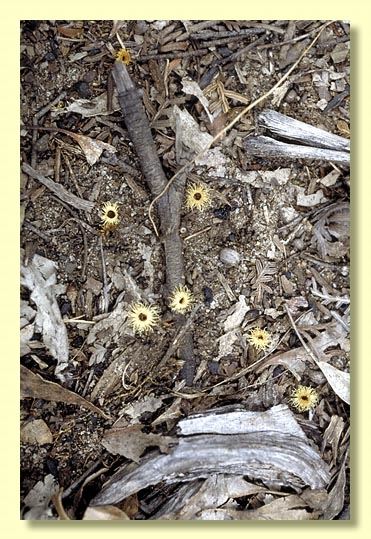 .
.
the persistent bark on the lower trunk of an otherwise smooth-barked tree
marked with more or less parallel longitudinal ridges
dead bark that is persistent, long-fibred, thick, furrowed, and often interlaced beneath the surface
the filament surmounting the ovary through which the pollen tube travels from the stigma to the ovules to effect fertilisation 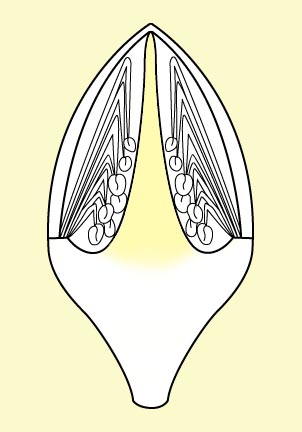
with a weakly scalloped edge
nearly opposite (usually referring to the position of leaves on the stem)
syntype (specimen or specimens cited by the author in the original description when no holotype was designated)
(type) the element of a taxon (for a species or subspecies, usually a botanical specimen) to which the name for that group is permanently attached, either as a correct name or as a synonym
in the form of tube or tubicle
of the operculum, like a sheik's turban, a word to describe those opercula with rounded bases wider than the hypanthium 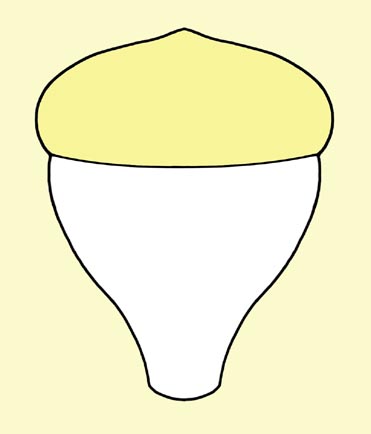
inflorescence with sessile or pedicellate flowers arising from the top of a peduncle; a simple inflorescence is a single umbel; a compound inflorescence has several to many umbels as subunits of the whole
inflorescences with sessile or pedicellate flowers arising from the top of a peduncle; a simple inflorescence is a single umbel; a compound inflorescence has several to many umbels as subunits of the whole
a knob or boss, more coarse than an apiculum.
with a delicate hook at the tip (of a leaf)
a sector of the roof of the capsule of a eucalypt fruit which is formed by dehiscence and is usually raised to allow the passage of seed and chaff 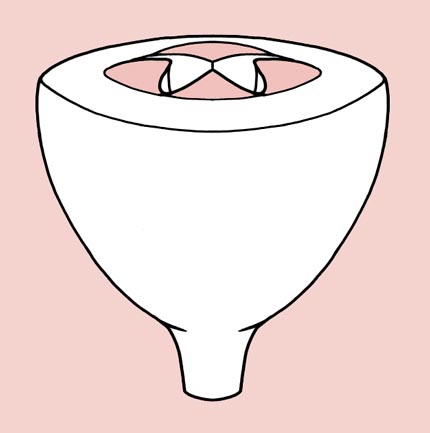
sectors of the roof of the capsule of a eucalypt fruit which is formed by dehiscence and is usually raised to allow the passage of seed and chaff
the pattern of veins of the leaves
the longitudinal "wings" of a prominently 4-sided stem 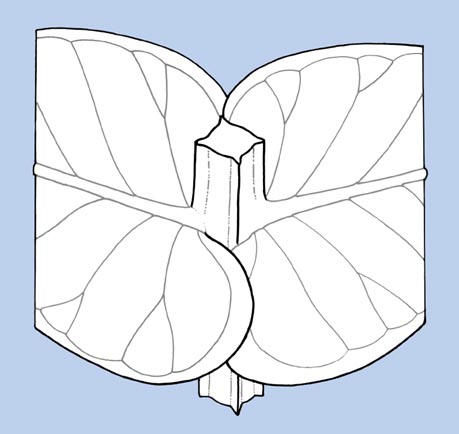 , or on some gumnuts; the thin, membranous, (usually transparent) appendage on the edge of some seed
, or on some gumnuts; the thin, membranous, (usually transparent) appendage on the edge of some seed 